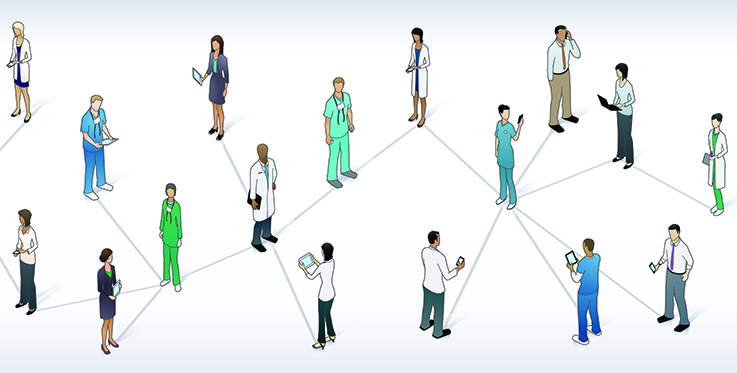
20 Apr 8 Surprising Ways Biomedical Informatics Can Help Your Research
Biomedical informatics can be an ambiguous term to the uninitiated.
Most investigators know that the Institute of Translational Health Science’s biomedical informatics team assists with extracting data from electronic medical record data sources. But they can help with more than just extraction, says ITHS biomedical informatics consultant Christine Fong.
Fong recently shared with us eight surprising ways biomedical informatics can help investigators and research teams.
1. Help you find study participants.
If a researcher is having difficulty recruiting participants, we can help by screening electronic medical records to identify patients that meet certain criteria. We have access to more than 50 clinical data sources from UW Medicine as well as a network of primary care community clinics.
For example, a researcher recently worked with us to identify a very specific population: patients whose labs indicated they may have diabetes but who had not been diagnosed yet. We developed a daily screen that looks at labs and diagnoses from the previous day. When the program identifies eligible patients, their information is moved to a user-friendly web portal that investigators can access.
2. Identify and alert you to potential study participants in real-time.
If an investigator needs immediate, real-time updates about eligible participants, we can help. In one study, the researchers were looking for people who were currently admitted to the hospital and had a specific liver disease. We created a real-time, secure web report that lists patients currently matching their study criteria. They could actually approach the patients in the hospital to see if they were interested in participating in the study.
3. Send a text message when a new potential participant is identified.
Sometimes research teams are working in the field and have limited access to computers. With our automatic text messaging and email solutions, research teams can receive immediate alerts about potential participants—without being tied to a desk.
4. Track participants and study enrollment.
One option is to automatically import potential study participants into a REDCap project,where the research team can add additional annotations and enrollment information. A second option is to integrate enrollment status directly in the secure web report listing patients who meet the study criteria.
5. Find patients with specific terms in the text of their clinical notes.
While it would take hours and hours for a human to look for keywords within the notes of electronic medical records, a computer algorithm can do it a fraction of the time. For example, we recently helped researchers who were looking for children who have autism or sensory processing disorder. It is hard to find these patients because the diagnosis codes are not very reliable. Our team was able to search clinic notes for related keywords to find potential study participants.
6. Extract large retrospective datasets from electronic medical records.
We can help researchers get large amounts of data through bulk data extractions. Previously, researcher teams needed to manually find and transfer EMR data themselves. Now we can automate those data extractions and provide datasets or, better yet, import the data into the investigator’s REDCap project. That really saves researchers time. Researchers have used these large data extractions to create predictive models or study the outcomes of specific treatments over several years.
7. Determine study feasibility.
The De-identified Clinical Data Repository (DCDR) is a self-service tool that allows researchers to determine the count of patients in the University of Washington’s clinical data repository that meets their criteria of interest. It is a great tool for researchers to do some exploration on their own.
8. Answer your data processing and programming questions.
The biomedical informatics team also offers general programming assistance. For example, we can help researchers clean up and organize data files for easier analysis. A unique example is how we helped a research team analyze keywords in healthcare-related job postings. It was not something we had done before, but because we have informatics skills, we were able to help them out. If a researcher has these types of needs, we are open to exploring where our various computer programming skillsets could be of assistance.
Looking for biomedical informatics support?
Now that you know the different ways biomedical informatics can support your work, do you have an idea for a new project? Visit the ITHS biomedical informatics web page to learn more and schedule a consultation.
Important Note: As of September 1, 2018, the ITHS Biomedical Informatics team will no longer provide services through the De-identified Clinical Data Repository (DCDR) tool. The ITHS DCDR will be replaced by a new tool called, “Leaf,” which has been developed in partnership with UW Medicine.
Learn more about Leaf ›








